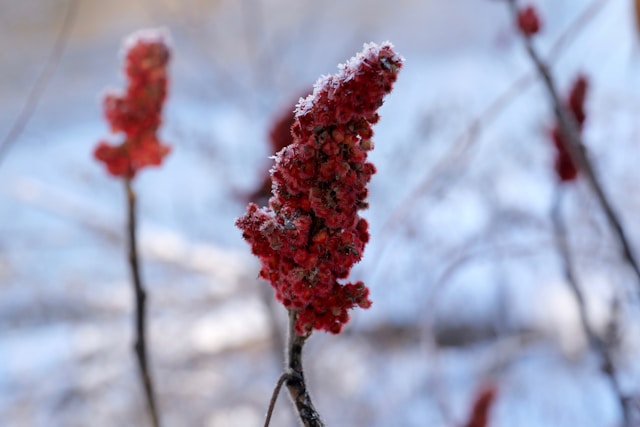Sumac history, chemistry, and more
To continue my discussion about sumac from my last recipe post: jasmine brown rice verde with roasted chicken thighs, and fattoush salad. I’ll be talking about the history, chemistry, and other information such as composition and properties of this ingredient, and handling processing and storage.
Sumac history
Sumac has been used for centuries, dating back to ancient times in the Middle East. There are different applications for this ingredient, cuisines and recipes, increasing shelf life, decreasing microbial growth, and different medical purposes.
Chemistry, properties and composition
Based on functional foods and nutraceuticals in metabolic and non-communicable diseases: “Studies on sumac fruit and leaf oil have determined that the sumac fruit contains flavanols, phenolic acid, anthocyanins, and organic acids. The sour taste is due to the presence of organic acids such as malic acid, citric acid, and tartaric acid.” Sumac contains mostly linoleic acid, which is a polyunsaturated omega 6 fatty acid. This type of fatty acid is usually found in nuts, tempeh, olive oil, and soymilk among other foods. Other oils that are found in sumac include oleic acid, and less of the following compounds: flavonoids, Free amino acid (building blocks of protein), tannins, and anthocyanin. This ingredient has a balance of nutrients that benefits the body. There are other compounds as well that I didn’t list here. Feel free to look more into the chemistry if you’re interested; found under references.
The plant named Rhus coriaria L. has a red color as the picture shows:

Image credit: Carter Obasohan on Unsplash
Handling process
The process starts with the berries being soaked to soften the berries, dried, crushed, or ground. The next step is strained and pressed to release all their juices; a fine red-purple powder is formed. The picture in fresh organic spices shows the final sumac product.
Storage
The final product is stored in the cupboard, or airtight container away from moisture, heat, sunlight to maximize its shelf life.
References
- Website: https://en.wikipedia.org/wiki/Sumac
- Website: https://freshorganicspices.com/product/organic-sumac/
- Rayne, S., Mazza, G. (2007). Biological Activities of Extracts from Sumac (Rhus spp.): A Review. Nat Prec. Website: https://doi.org/10.1038/npre.2007.631.1.
- Taylor, Pete (2023). What is Sumac? A Guide to Buying, Cooking, and Storing Sumac. The Spruce Eats. Website: https://www.thespruceeats.com/what-is-sumac-1763131
- Khoshkharam, Mehdi, Hesam Shahrajabian, Mohamad, B. Singh, Ram, Sun, Wenli, Magadlela, Anathi (2022). Sumac: a functional food and herbal remedy in traditional herbal medicine in the Asia. Functional foods and nutraceuticals in metabolic and non-communicable diseases. Elsevier. Chapter 17.

Pingback: Food science topics – Alimentative
Pingback: Food science topics – Muayyad Karadsheh
Pingback: Spices-Part 2 | Living Well In The 21st Century